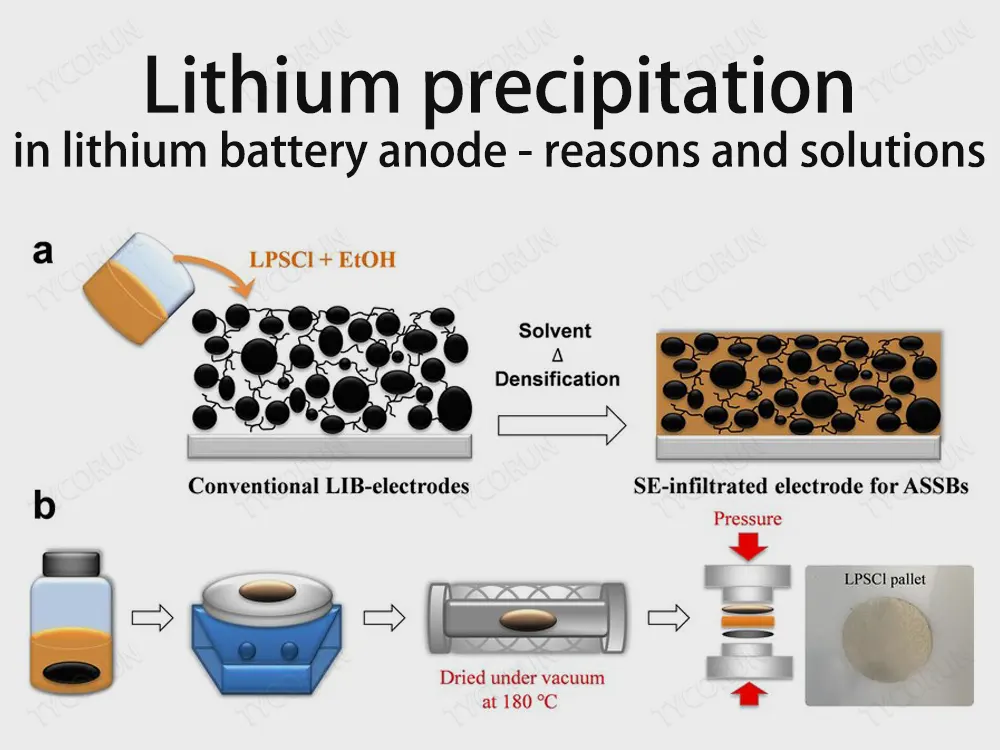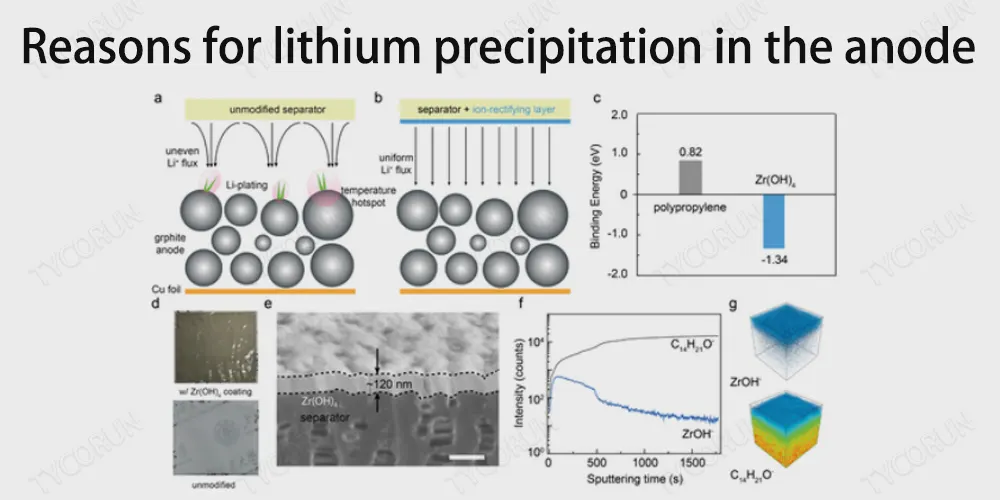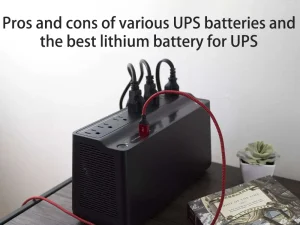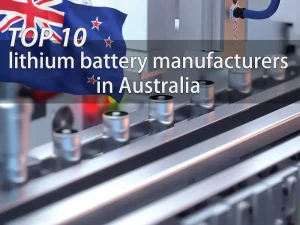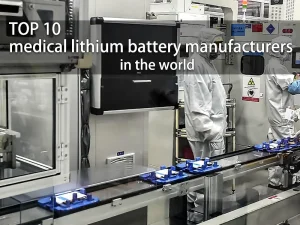Home » battery news » Lithium precipitation at lithium battery anode – reasons and solutions
Lithium precipitation at lithium battery anode - reasons and solutions
Lithium precipitation at the anode of lithium battery can not only degrade the performance of the battery and greatly shorten the cycle life, but also limit the fast charging capacity, and even cause safety risks such as combustion , swollen battery, and even explosion.
This article will introduces the classifications and reasons of lithium precipitation, and the solution to avoid it from happening.

What is lithium precipitation at the anode
The lithium intercalation potential of graphite is 65~200mV (vs. Li+/Li0). When the potential of the anode is close to or lower than the precipitation potential of metal lithium, lithium ions are precipitated on the surface of the anode in the form of lithium metal.
Experiments have found that the precipitation reaction of lithium ions on the surface of the anode and the intercalation reaction in graphite proceed simultaneously. During the charging process, part of the lithium ions are deposited on the surface of the anode in the form of lithium metal, and the rest of the lithium ions are intercalated into the graphite.
During the discharge process, the deintercalation of ions and the stripping of the deposited lithium metal occur. During the stripping process of lithium metal, “dead lithium” will be formed.
The reaction of “dead lithium” with the electrolyte is the main reason for the loss of capacity and shortened cycle life of lithium-ion batteries. Lithium evolution at the anode is the result of charge transfer limitation (CTL) and solid diffusion limitation (SDL).
As the charging progresses, the positions that lithium ions can be intercalated between the graphite layers gradually decrease, which limits the diffusion of lithium ions in the graphite solid phase, and the corresponding lithium intercalation current also gradually decreases.
At the same time, due to the diffusion of lithium ions from the electrolyte, the rate to the anode is much greater than the rate of its intercalation into graphite, resulting in more and more lithium ions accumulating on the surface of graphite, driving the potential of the anode close to the potential of lithium evolution, resulting in the deposition of lithium at the anode.
Classification of lithium precipitation at the anode
Edge lithium precipitation
In the design process of lithium-ion batteries, for the sake of safety and to prevent the anode from dissolving lithium, the area of the anode sheet is larger than that of the cathode sheet, that is, the edge of the anode sheet exceeds the size of the cathode sheet by 1~3mm, and the area where the anode sheet protrudes from the cathode sheet is called overhang.
There are two reasons for the edge lithium precipitation:
- The overhang design is too large, which causes excessive lithium ions on the edge of the cathode, resulting in the overhang area of the anode being unable to embed excess lithium ions from the cathode during charging, and causes lithium precipitation.
- The cathode and anode are coated, and the areal density mismatch at the edge of the cloth process due to the thick edge effect, such as excessively high areal density at the edge of the cathode or too low areal density at the edge of the anode, and finally causes lithium precipitation.
Partial lithium precipitation
The distribution of partial lithium precipitation is relatively random without fixed area, distributed in the form of discontinuous spots. The main reasons for partial lithium precipitation includes the external force on some parts of the battery cell (such as extrusion, deformation of the battery cell, etc.), partial defects of the pole piece and separator.
In addition, insufficient wetting of the electrolyte, residual gas in the separator and the anode will also lead to lithium precipitation during the charging process of the anode.
Uniform lithium precipitation
Uniform lithium precipitation means that lithium metal is uniformly covered on the entire surface of the anode plate.
Uniform lithium evolution is related to the uniformity of current distribution in the charging process, and the uniformity of current distribution is related to the quality of the pole plate, such as pore distribution, tortuosity, surface morphology, conductive network, etc. In addition, the uniformity of current distribution is also affected by the position and number of pole lugs.
Reasons for lithium precipitation at the anode
N/P value changes
The N/P value is the ratio of the anode capacity to the cathode capacity in a lithium-ion battery, also known as the cell balance(CB) value. N/P value is an important factor affecting battery safety. The lower N/P value will make the anode lithium potential reach the lithium precipitation potential, causing the lithium precipitation of the anode during the charging process.
On the other hand, although the high N/P value can inhibit the occurrence of lithium precipitation under the given cut-off voltage, it will lead to excessive delithium in the cathode electrode, which will not only lead to the instability of the cathode crystal structure, but also cause the oxidation reaction of the electrolyte in the cathode electrode.
During the use of the battery, the N/P value is constantly changing, and the change in its value is related to the battery charging rate, cut-off voltage, ambient temperature and the number of cycles.
In addition, the change of N/P value is related to the chemical system of the battery, such as high nickel cathode materials, generally due to structural collapse and metal ion dissolution, with the increase of the number of cycles, N/P value is higher and higher. For silicon-based anode materials, the N/P value will decrease due to large volume expansion, defilm, particle rupture and SEI iterative formation.
In short, there are many factors that affect the change of N/P value, such as the type of cathode and anode active materials, charge rate, charge and discharge cut-off voltage, etc. Therefore, in the process of battery design, the characteristics of N/P value change should be considered to avoid the anode lithium precipitation caused by a decrease in N/P value.
Low temperature charging
From the thermodynamic analysis, the ambient temperature decreases, the charge transfer impedance increases, the anode potential decreases, and the lithium ion precipitates on the anode surface in the form of lithium metal when it is reduced to the lithium precipitation potential. According to the kinetic analysis, when the temperature decreases, the chemical reaction rate will also decrease.
When the charging temperature decreases, the diffusion rate of lithium ions in the electrolyte, SEI film and the graphite solid phase will all decrease. Under the condition that the energy barrier remains unchanged, the probability of lithium intercalation reaction decreases. A large number of lithium ions obtain electrons at the anode and lithium precipitation occurs.
Therefore, when the lithium-ion battery is used at low temperatures, it is necessary to reduce the electrode polarization impedance, improve the diffusion rate of lithium ions in the electrolyte, SEI film and graphite solid phase, to avoid lithium precipitation at the anode.
Fast charging
During extremely fast charging, the electrode surface has a higher current density per unit area, that is, a higher lithium ion concentration. The driving force for lithium ions to be embedded into the solid phase from the graphite anode surface is a concentration gradient.
When the lithium ion transmission speed is slow (low temperature, the state of charge is high or the material has a high energy barrier) and the current density is relatively high during the charging process, lithium precipitation will occur.
In addition, high-rate charging will also promote the anode to reach the lithium precipitation potential, resulting in lithium precipitation. Therefore, under low state of charge (SOC), if charge the battery with battery charger at a high rate, as the SOC rises, should change to use a small current to charge to avoid lithium precipitation.
Lithium-ion battery is left to stand for a certain period of time, and the precipitated metal lithium will be re-embedded in the graphite crystal to reduce the loss of active lithium.
Overcharge
Overcharge refers to the behavior that the charging voltage exceeds the upper cut-off voltage after the battery is fully charged. The degree of overcharge of the lithium-ion battery is generally expressed by the SOC of the battery. When the SOC exceeds 185%, the anode surface is completely covered by lithium metal.
For the power battery, including the products from top 10 lithium iron phosphate power battery manufacturers, the single battery should be used after series and parallel, if the voltage, internal resistance and capacity consistency of each single battery is poor, it is easy to overcharge the individual battery, and then lithium precipitation happens on the anode surface, resulting in safety accidents.
For lithium-ion battery overcharge problem, it can be controlled from two aspects:
- Through the battery management system control;
- Internally, by increasing the oxidation potential of the electrolyte and increasing the initial temperature of the battery thermal runaway.

Large Overhang
The outflow and inflow phenomena of lithium ions at the anode active region and Overhang region are closely related to the change of battery capacity and anode lithium precipitation.
For example, in the process of battery charging, due to the existence of Overhang region, the Overhang region of the anode is not completely lithium when charging is completed, the edge of the anode sheet forms a gradient distribution of lithium. In the subsequent static process, the lithium embedded at the anode sheet diffused from the center to the edge.
There is still unembedded lithium in the Overhang region, indicating that during the discharge process, the edge of the cathode plate not only receives lithium ions from the anode region directly opposite its edge, but also receives lithium ions removed from the anode Overhang region.
With the increase of the cycle, the lithium concentration at the edge of the cathode plate will become higher and higher, resulting in the charging process. Lithium precipitation is easy to occur at the edge of the anode. Therefore, under the manufacturing quality of the pole sheet and the precision that the manufacturing equipment can achieve, the Overhang area is designed as small as possible to avoid lithium precipitation.
Solutions for lithium precipitation at the anode
Battery structure optimization
The cell structure is closely related to the lithium precipitation window of the anode electrode. For example, reducing the Overhang zone prevents edge lithium precipitation caused by large lithium ions migrating from the cathode edge to the anode edge during charging.
The use of multipole lug design can ensure the distribution of the current density of the battery cell during the charging process to avoid local lithium precipitation caused by excessive partial current density. In addition, reasonable N/P value is also an effective measure to suppress anode lithium precipitation.
Pole piece quality control
The pole piece manufacturing steps include: slurry preparation, pole piece coating, and pole piece rolling. These steps affect the porosity, tortuosity, and surface density of the pole piece, which affects the current distribution during battery charging.
The impact of the pole piece (including the cathode pole piece and the anode pole piece) on the lithium precipitation of the anode pole is mainly manifested in: partial lithium precipitation caused by insufficient stirring of the slurry or coating defects of the pole piece, and large-area lithium precipitation can also be caused by insufficient lithium intercalation kinetics of the anode caused by excessive compaction of the pole piece.
Electrode surface treatment
Avoiding the lithium precipitation of the anode can be achieved by reducing the overpotential of the graphite anode and increasing the overpotential of lithium deposited on the surface of the anode. Lithium precipitation belongs to the process of electrocrystallization, first nucleation, and then growth, the driving force of growth is the difference in interface energy between the anode surface and metal lithium.
Depositing a nanometer-thick metal layer on the surface of the anode by magnetron sputtering can increase the precipitation overpotential of lithium metal and weaken the driving force of lithium metal growth, thereby achieving the purpose of improving lithium precipitation.
In addition, laser etching is used to build a pit array on the surface of the anode, which can effectively reduce the diffusion resistance and charge transfer resistance of lithium ions in a low temperature environment, and reduce the risk of lithium precipitation
Anode material optimization
The lithium intercalation kinetics of anode graphite can be described by energy barriers. The energy barriers for lithium ions to intercalate into graphite crystals from the end face and plane are 0.3~0.7eV and 10eV, respectively. Even if there are defects in the graphite basal plane, the lithium intercalation energy barrier of the basal plane is still an order of magnitude higher than that of the end face (2.36~6.35eV).
Therefore , lithium ions are more likely to intercalate between the graphite layers from the end face. Among them, the end faces of graphite are divided into two types: armchair-edged and zigzagedged.
According to the research results of doping boron (B) and nitrogen (N) on the end faces of chair-edged and Z-shaped respectively, it is found that chair-edged after the type end face B is doped, the Fermi energy level decreases and the adsorption energy increases, which is beneficial to the improvement of the lithium intercalation kinetics of graphite.
Electrolyte additives optimization
The lithium precipitation of the anode is affected by the polarization of the anode and the kinetics of lithium intercalation.
These factors are related to the mechanical properties, chemical stability and ion conductivity of the SEI film, while the functional additives (film-forming agents) in the electrolyte help improving the quality of the SEI film. Based on this, developing a suitable film-forming agent is also an effective way to solve the lithium precipitation of the anode.
There are many types of film-forming additives: such as unsaturated carbon-containing compounds, sulfur-containing organic compounds, halogen-containing organic compounds, inorganic compounds, ionic compounds and other organic compounds.
From the perspective of solving the lithium precipitation of the anode, the optimization of the film-forming agent of the electrolyte should not only consider the structural stability of the film, less side reactions, and low impedance, but also focus on improving the ionic conductivity of the film.
Charging process optimization
Battery preheating technology
Raising the battery temperature can increase the conductivity of the electrolyte, the surface exchange current density of the graphite anode, and the solid phase diffusion rate of lithium ions, which can solve the problem of lithium precipitation of the anode.
However, it should be noted that increasing the temperature has a positive effect on improving lithium precipitation, but excessively high temperature will cause the SEI film to grow faster, resulting in the loss of active lithium. Therefore, the use of self-heating technology must ensure precise temperature control.
Charging program design
During the charging process, as the battery voltage continues to rise, the potential of the anode gradually decreases. When the potential of the anode is lower than the lithium precipitation potential, lithium precipitation occurs. Therefore, controlling the anode potential above the lithium precipitation potential can avoid the occurrence of lithium precipitation.
The standard charging procedure includes CC and CV stages. The anode potential gradually decreases in the CC stage, and the anode potential gradually increases in the subsequent CV stage. Lithium precipitation occurs in the CC stage.
By constructing three electrodes, the voltage of the battery when lithium precipitation occurs can be determined to set the charging program to ensure that lithium precipitation will not occur during the charging process of the battery.

